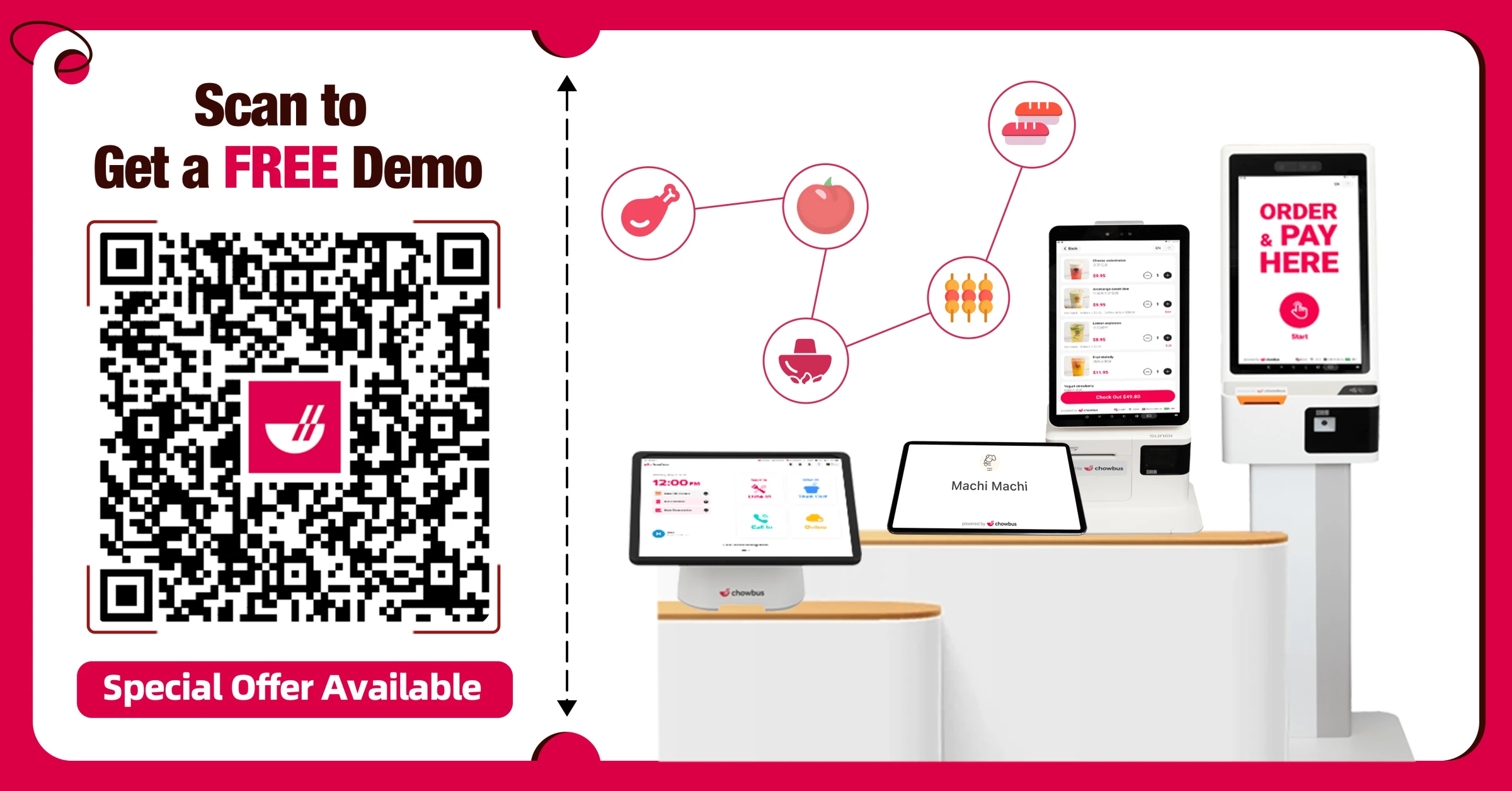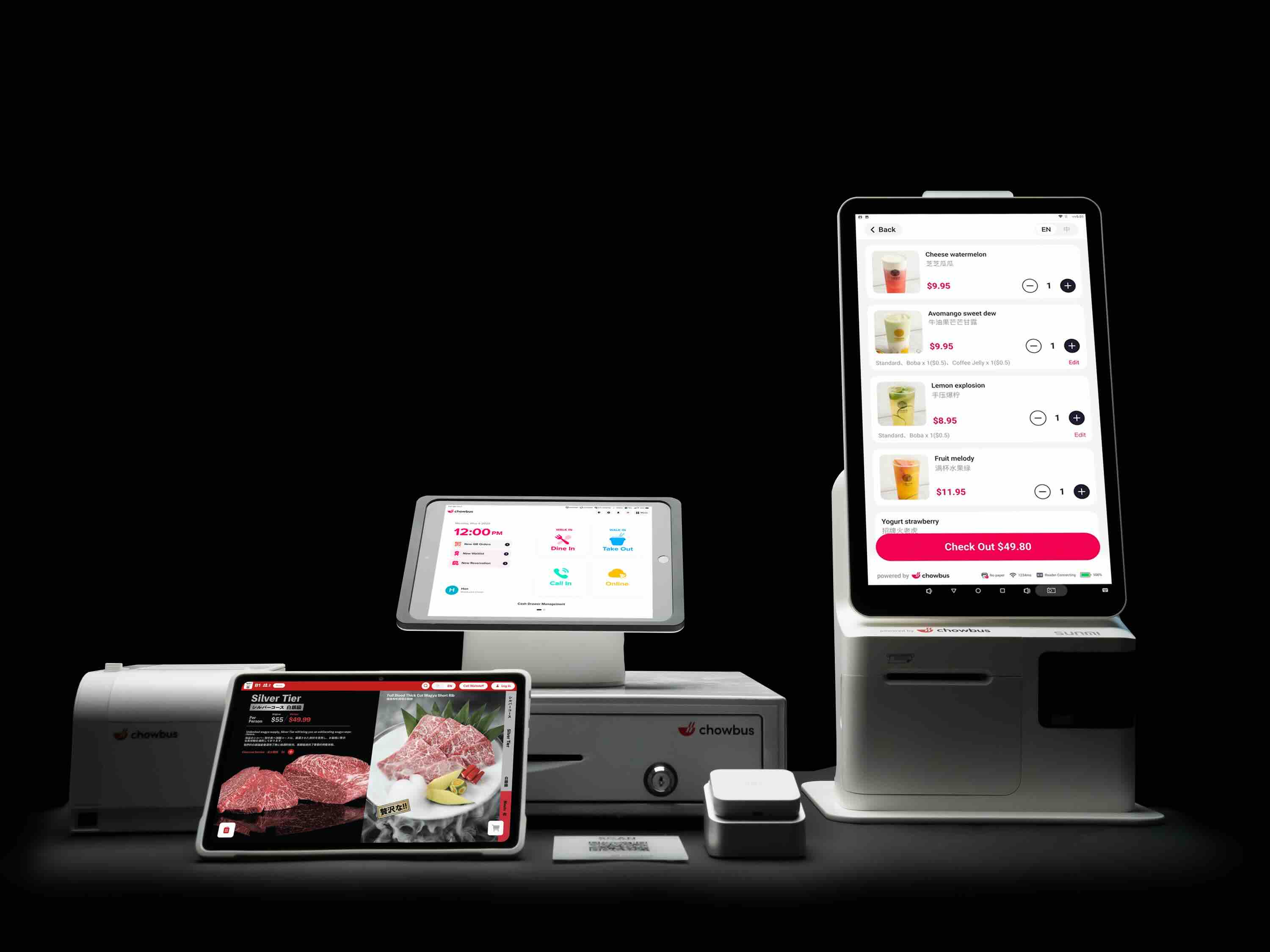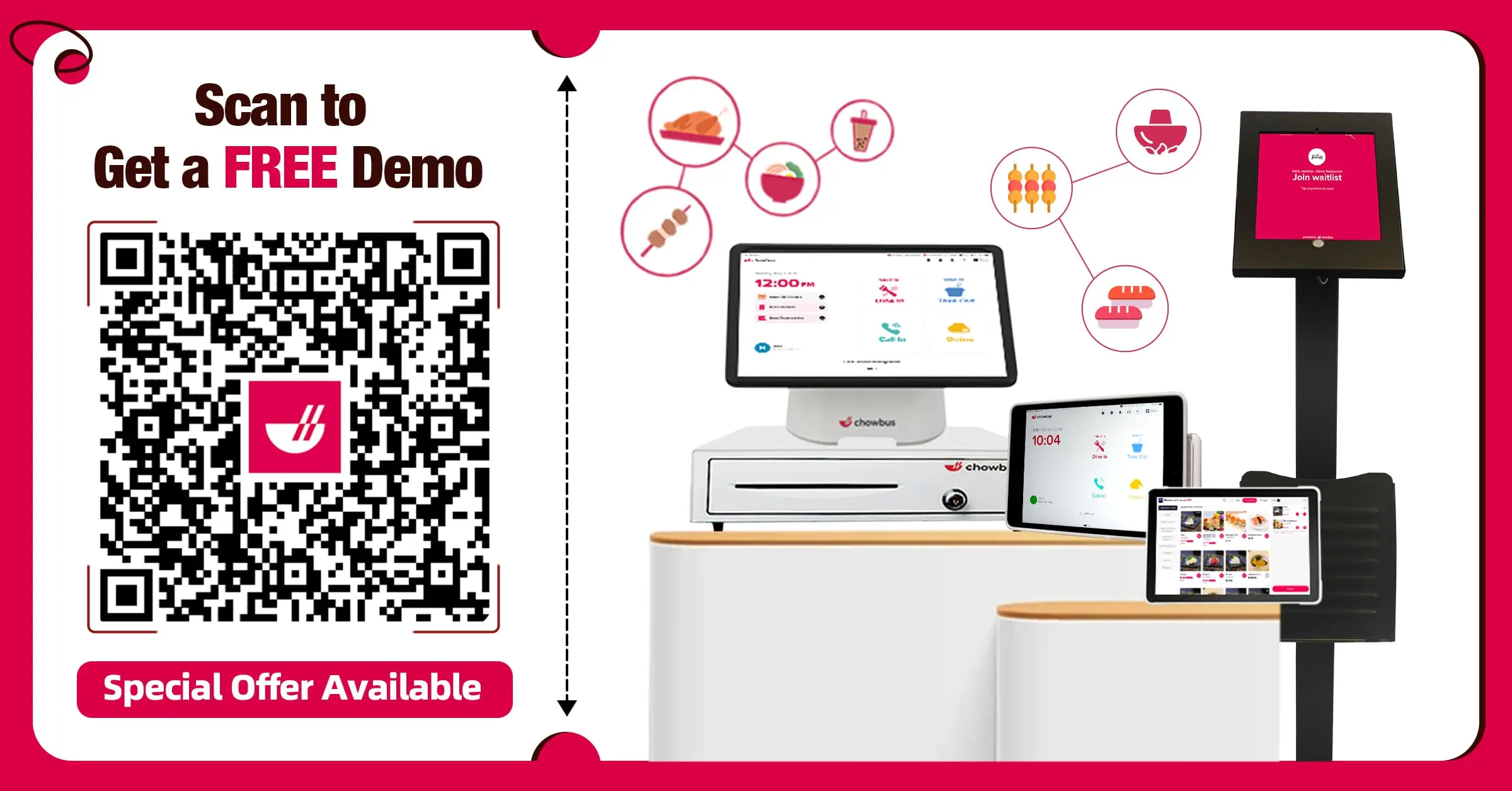New Technology in Restaurants: Trends and Tools for 2025

New technology in restaurants continues to shape how service runs, how teams work, and how guests interact with your brand. With rising labor costs, shifting customer expectations, and tighter competition, the right tools can make all the difference. From automation and mobile ordering to smarter POS systems, new technology in the restaurant industry offers direct ways to improve speed, consistency, and guest satisfaction.
This article breaks down the key trends in 2025, real examples of new technology used in restaurants, and what to consider before making a switch—so you can move forward with confidence.

Why Embracing New Technology in Restaurants is Essential Today
Today, staying competitive in the restaurant business means embracing new technology. It's not just about keeping up with trends—it's about leveraging tools that directly tackle your operational challenges and elevate your customer’s experience.
First, consider efficiency. New technology, from mobile ordering systems to kitchen automation, streamlines your operations. This means quicker service and fewer errors, a straightforward way to improve your bottom line while ensuring customers leave happy.
Then there's customization. Digital menus and on-the-fly order adjustments give your guests control over their dining experience, leading to greater satisfaction and repeat business. It’s a clear win-win: your guests feel taken care of, and you see increased loyalty and revenue.
On top of this, analytics play a huge role. Modern POS systems provide actionable insights into what’s working and what isn’t. This data-driven approach allows you to make informed decisions that can transform every aspect of your operation, from menu design to staffing.
Finally, the agility to adapt to unexpected situations—like a sudden change in dining preferences or global health guidelines—can set you apart. Technology such as contactless payment options and robust delivery integrations keeps you resilient, letting you adjust operations swiftly and safely, no matter what the day brings.
Integrating new technology helps you serve better, react faster, and plan smarter. It’s essential for any restaurant aiming to thrive in a competitive environment and deliver a memorable dining experience.
New Technology in the Restaurant Industry: Key Trends in 2025
2025 is all about making operations faster, smarter, and more connected. Many restaurants are turning to tech that boosts efficiency and enhances the guest experience—without adding unnecessary layers of complexity. Here's what’s getting the most attention this year:
1. AI-Powered Ordering and Recommendations
AI tools help personalize upsells, predict popular items, and speed up service. These systems process guest data in real time to offer relevant suggestions and help staff focus on high-impact tasks.
2. Mobile and Tableside Ordering
QR code menus and mobile ordering platforms remain strong, especially for casual and fast-casual concepts. Guests order and pay from their phones or at the table, which reduces wait times and increases table turnover.
3. Self-Service Kiosks
These kiosks cut down lines, reduce labor strain, and improve order accuracy. They're showing up more in quick-service and fast-casual formats, especially in high-traffic locations.
4. Robotics and Automation
From burger-flipping robots to automated fry stations, robotics reduce repetitive tasks and support consistency during peak hours. Some kitchens use automated systems to assemble bowls, pizzas, or drinks—freeing up staff for more guest-facing roles.
5. Smart Kitchen Display Systems (KDS)
Replacing paper tickets with digital screens keeps kitchens organized and efficient. KDS systems improve communication between the front and back of house, speeding up prep times and reducing mistakes.
6. Integrated Delivery Solutions
With off-premise demand holding strong, more restaurants are turning to direct integrations with delivery platforms or using middleware to sync orders into the POS automatically. This reduces delays and manual entry errors.
7. Advanced POS Systems with Real-Time Analytics
Today’s POS systems do more than ring up sales. They offer real-time reporting, multi-location syncing, and staff performance tracking—giving operators a clear view of what’s working and what needs adjusting.
8. Contactless Payment Options
Tap-to-pay, mobile wallets, and pay-at-table tools continue to grow. These tools speed up the checkout process and give guests more control over how they pay.
Staying current with new technology in the restaurant industry means focusing on tools that solve everyday problems—faster service, reduced labor costs, and better guest engagement. The key is picking the right tools to match your concept and service model.
Real-World Examples of New Technology Used in Restaurants
Technology makes the biggest impact when it solves real problems in daily operations. Here's how different restaurants are using new tools to streamline service, reduce manual tasks, and improve efficiency—all powered by Chowbus POS
1. Molly Tea – Standardized, Streamlined, and Scalable
With nearly 5,000 drinks served daily across locations in New York and the Bay Area, Molly Tea relies on Chowbus POS to keep operations consistent and efficient. Staff print a QR-coded label from the POS, scan it with an automated tea machine, and the drink is prepared in seconds. Once it’s ready, a tap on the POS triggers a pickup notification on the smart order screen—no need for calling out names. Integrated third-party delivery orders sync automatically, eliminating manual entry, reducing labor, and cutting down on errors.
2. Machi Machi – Self-Service Ordering with Kiosks
In New York City, Machi Machi uses three in-store kiosks to manage the bulk of in-store orders. Guests place orders independently, freeing staff to focus on prep. With clear images and product details on the screens, customers get the information they need to order quickly. The result: faster order fulfillment, lower labor costs, and a better guest experience.
3. Jongro BBQ – Fast, Flexible, and Staff-Friendly
At Jongro BBQ in New York City, handheld POS devices let staff take orders tableside and process payments without going back to the counter. Guests appreciate the speed, and staff stay more focused. With over 100 employees and a high daily volume, system stability and 24/7 support from Chowbus keep things running smoothly.
4. Chubby Cattle – Efficiency at Scale
Across 40+ U.S. locations, Chubby Cattle uses a mix of tablet ordering, handheld POS, and membership tools to support its self-service Korean BBQ concept. The custom-designed tablet system speeds up ordering and reduces the need for servers. Handheld POS units handle payment right at the table, including tip selection and signature. The restaurant also boosts revenue by using Chowbus Membership to drive loyalty and repeat visits.
5. Kyuramen – Cutting Labor Without Cutting Service
With more than 10 locations in the U.S., Kyuramen saves around 30% in labor costs using tablet ordering, handheld POS, and membership features. Guests can call for help directly through the tablet, and check out instantly at the table. The membership system has helped grow a loyal base—over 4,000 members in six months—and secure nearly $1M in preloaded balances.
These examples show how new technology used in restaurants can support different concepts, reduce overhead, and create smoother service experiences. From self-service kiosks and handheld POS to smart integrations and loyalty programs, each tool plays a role in modernizing operations and growing revenue.
Benefits of New Technology in Restaurant Industry Operations
The adoption of new technology in the restaurant industry can transform your operations, enhancing both efficiency and profitability. Here’s how these advancements can benefit your business:
Operational Efficiency: Automating routine tasks not only reduces human error but also speeds up your service. From automated order-taking systems to kitchen robots preparing dishes, these technologies ensure that your operations run more smoothly and quickly, allowing your staff to focus on providing top-notch customer service.
Cost Savings: Employing smarter technology helps cut down on waste and reduces labor costs. For example, advanced scheduling tools ensure you staff efficiently, avoiding under or overstaffing, which can lead to excessive payroll expenses. Likewise, modern systems that aid in precise ordering help minimize excess inventory, keeping your costs in check without sacrificing the quality of your offerings.
Customer Experience: Today’s technologies offer numerous ways to enhance the dining experience. From mobile ordering and payments to personalized dining recommendations via AI, your guests enjoy faster service and more seamless interactions. This not only meets but exceeds customer expectations, fostering loyalty and encouraging repeat business.
Data-Driven Strategy: Utilizing real-time analytics can significantly change how you make business decisions. These insights allow you to understand customer preferences and behavior patterns, enabling you to proactively adjust your offerings and operations. This strategic advantage means you can optimize your marketing, menu design, and even staffing, all based on data-driven insights.
The cumulative effect of these benefits leads to more consistent operations, better guest reviews, and, ultimately, higher profit margins. Integrating the right technologies positions your restaurant to thrive in a competitive market, ensuring you stay ahead while delivering exceptional value to your customers.
Considerations for Adopting New Tech
Bringing in new technology should feel like a step forward—not a disruption. To get the most value, take a practical, focused approach. Here’s what to keep in mind:
Start with clear goals - Identify what you want to improve. Is the priority faster service, better guest experience, or reducing labor pressure? Pinpointing the main issues helps filter out distractions.
Evaluate how the tech fits into your flow - A system that slows down your team, even briefly, can backfire. Look for tools that match your service model, whether that’s counter-service, full-service, or hybrid.
Check integration capabilities - If you already use systems for ordering, payments, or delivery, make sure the new tech connects smoothly. Poor integration adds friction and slows adoption.
Plan for staff training - Tech works best when everyone uses it with confidence. Look for providers that offer simple onboarding and responsive support. The smoother the training, the faster your team can get back to focusing on guests.
Understand total cost - Consider upfront costs, monthly fees, and possible add-ons. Compare those against the time saved, labor reduced, or revenue increased. Look beyond the sticker price.
Test scalability - Tech that works for one location should also work across multiple sites, especially if you’re growing. Consistency across outlets matters for both operations and guest experience.
Check vendor reliability - A polished demo is great—but how responsive is support when something goes wrong? Look into reviews, uptime records, and how often updates roll out.
Look at data insights offered - Good tech should give you more than just functionality. It should show you what’s working, what’s lagging, and where adjustments can make the biggest impact.
Being selective up front reduces friction later. The right setup should make life easier for both your team and your guests—without adding noise to the process.
Choosing the Right Tech for Your Concept
Every operation runs differently, so choosing the right tech means finding tools that align with how your restaurant works and what you're aiming to improve. Here’s how to think through it:
Independent Restaurants: Look for flexible, cost-effective solutions that are easy to implement. Focus on tools that speed up service, reduce labor needs, and keep guests coming back—like mobile ordering, tableside payment, or smart kitchen displays.
Franchisees and Multi-Unit Operators: Prioritize scalable platforms. The goal is consistency across locations, centralized control, and access to real-time performance data. A unified POS and reporting system helps maintain standards while reducing operational gaps.
Chains and Groups: Seek enterprise-level features with robust customization and deep analytics. Integration with loyalty, kitchen automation, and delivery platforms can streamline service across all units and give you insight into performance by region, brand, or concept.
CTOs and Innovation Teams: Choose systems that fit into your larger digital strategy. The tech should integrate cleanly with what’s already in place and offer flexibility for future upgrades. Ease of API integration, data ownership, and cloud scalability matter here.
Food Service Consultants & F&B Managers: Focus on ease of use, training requirements, and long-term value. Tech adoption succeeds when teams understand how it supports day-to-day operations. Evaluate how each platform fits into the flow of service—and how quickly teams can get up to speed.
Start with your goals, assess where the bottlenecks are, and choose a solution that supports your concept now—and scales with it later.
Conclusion
Adopting new technology in restaurants isn’t about following trends—it’s about finding practical solutions to improve speed, service, and consistency. From automation and contactless tools to data-driven systems that support smarter decisions, new technology in the restaurant industry continues to reshape what’s possible. As seen in the examples throughout this article, the right tools reduce friction, increase throughput, and enhance the guest experience—no matter the size or style of operation.
Since 2020, Chowbus has been building its own intelligent restaurant management system—officially launched Chowbus One in March 2022. Today, over 3,000 restaurants and nearly 50 brands use it to streamline operations, save on labor, and grow revenue. With a full suite of features—from smart POS to real-time digital reporting—Chowbus helps restaurants increase monthly revenue by at least 25% and save around $8,000 in labor each month.
Explore how new technology used in restaurants can create a lasting impact.

Frequently Asked Questions About New Technology in Restaurants
Explore how emerging technologies are transforming restaurant operations, from front-of-house service to back-of-kitchen automation. This FAQ addresses key questions to help you evaluate solutions that improve efficiency, reduce costs, and elevate the guest experience.
What is the Future Technology for Restaurants?
The future technology for restaurants centers around automation, AI-driven customer service, and sustainability innovations. Automation will streamline operations through robotic kitchen assistants and self-service kiosks, enhancing efficiency. AI will personalize dining experiences with smart recommendations and virtual assistants for both on-site and online interactions. Lastly, technologies focusing on energy efficiency and waste reduction will be pivotal, helping restaurants lower costs and improve their environmental footprint. These advancements will revolutionize how restaurants operate and interact with customers.
What Technology is Used in Restaurant Management?
Restaurants use POS systems to streamline transactions, inventory management software to track supplies, and reservation platforms to manage bookings. Kitchen display systems organize orders, while CRM tools personalize customer interactions. Online ordering integrations handle delivery, analytics tools optimize performance, and employee scheduling apps manage staff shifts. Self-service kiosks or mobile apps also enhance customer-facing operations.
How Can AI Be Used in Restaurants?
AI enhances restaurant operations by personalizing menu recommendations through customer data analysis, managing orders via chatbots or voice assistants, and optimizing inventory using demand forecasts. It streamlines staff scheduling based on traffic patterns, adjusts menu prices dynamically, and monitors food safety compliance. AI also powers sentiment analysis of reviews to improve service and automates repetitive kitchen tasks for efficiency.
What is the Future of Robots in Restaurants?
Robots will increasingly automate cooking, serving, and cleaning tasks to boost efficiency, reduce costs, and address labor shortages. AI-driven systems will handle order accuracy, personalize customer experiences, and optimize kitchen workflows. Expect hybrid kitchens where robots collaborate with staff, enhancing speed and consistency while maintaining human creativity in menu design and hospitality.
Looking for more tips on how to grow, streamline, or modernize your restaurant?
Visit our blog section for more insights and updates.

Recommended Articles: